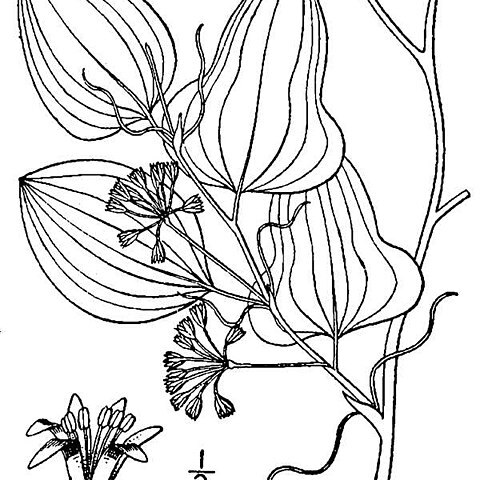Herbaceous, unarmed, climbing to 2 m, occasionally branched; lvs numerous, mostly with tendrils, the blade 5–12 cm, thin, glabrous, the larger ones hastate, with concave margins, truncate to subcordate at base, rounded and cuspidate at the tip; peduncles axillary to foliage-lvs, often 2 or 3 from the same axil, terete even at maturity surpassing the petiole and often nearly equaling the blade, with 10–30 fls; tep 1.5–2.5 mm; anthers 0.5–1 mm; fr black, glaucous, 4–6 mm, with 1–3 seeds; 2n=30. Moist or wet low places on the coastal plain; N.J. and Del. to Ga. May. (S. tamnifolia)
A herb. It climbs 1-2 m. The leaves are evenly distributed and there are tendrils. The leaves are D shaped to oval and 5-12 cm long by 2-5 cm wide. There are 10-35 flowers in groups in the axils of leaves. The fruit are blue to black berries 4-6 mm across.

